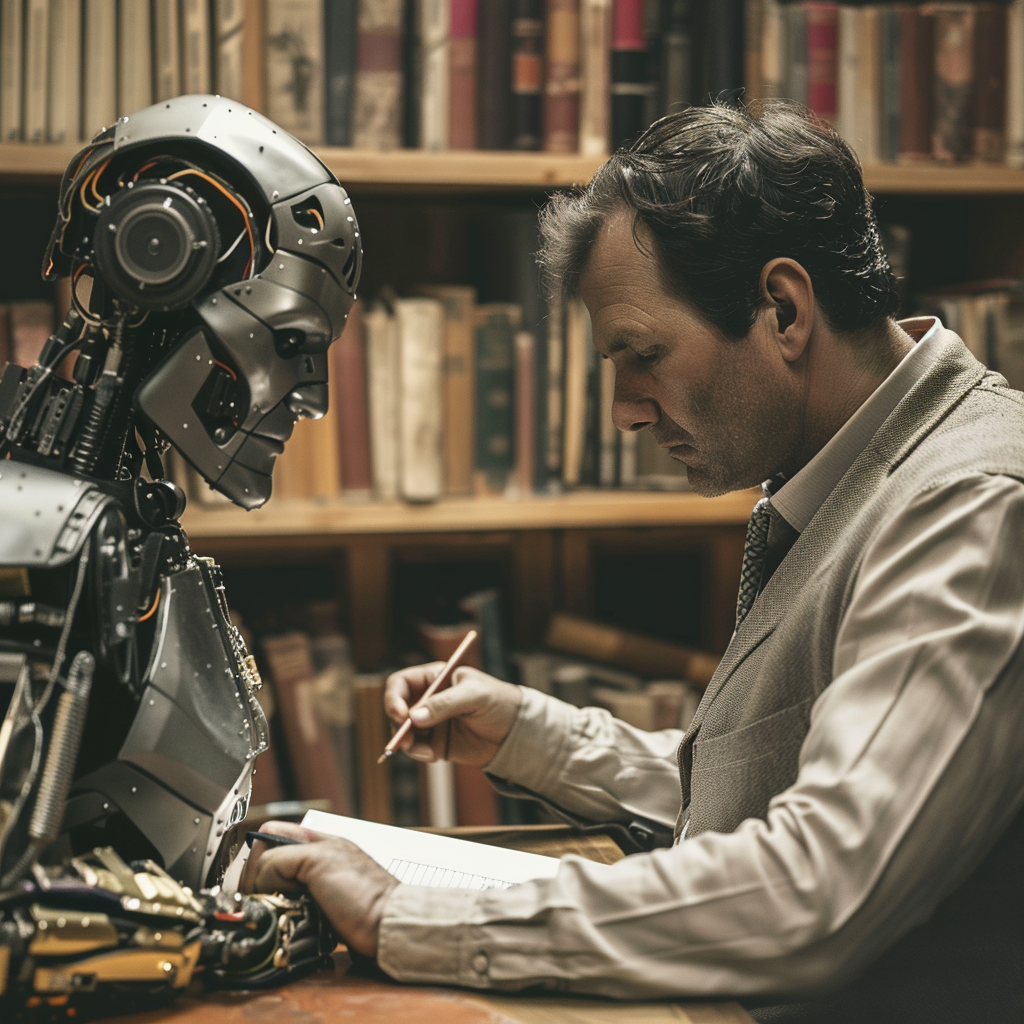In today’s digital age, the quest for flawless writing has never been more critical. Whether you’re a student, professional, or author, ensuring your content is polished and error-free is paramount. This need has given rise to a variety of proofreading tools and services, both human and AI-driven. But what is proofreading, and how do AI proofreaders compare to their human counterparts? In this comprehensive blog post, we’ll explore the roles, benefits, and drawbacks of both, helping you decide which is best suited for your needs.
What is Proofreading?
Proofreading is the final step in the editing process, focusing on correcting surface errors in grammar, punctuation, spelling, and formatting. It ensures that the text is polished and free from mistakes before it is published or submitted. Proofreaders play a crucial role in maintaining the quality and credibility of written content.
How to Become a Proofreader
Becoming a proofreader involves developing a keen eye for detail and a strong grasp of grammar and language rules. Many proofreaders start with a degree in English or a related field, although it’s not always necessary. Online courses and certifications can also help you hone your skills. To gain experience, consider taking on freelance proofreading jobs or internships.
How Much Do Proofreaders Make?
The earnings of proofreaders can vary significantly based on factors such as experience, location, and the type of content being proofread. On average, proofreaders in the United States can make anywhere from $25,000 to $60,000 per year. Freelance proofreaders often charge per word or per hour, with rates typically ranging from $0.01 to $0.05 per word.
What Are Proofreaders and What Do They Do?
Proofreaders are professionals who meticulously review texts to identify and correct errors in grammar, punctuation, spelling, and formatting. They ensure that the content is clear, consistent, and free of mistakes, making it ready for publication or submission. Their work is vital in various fields, including publishing, academia, marketing, and more.
Is Proofreading Services Legit?
Yes, proofreading services are legitimate and highly beneficial for anyone looking to enhance the quality of their written content. These services can range from individual freelance proofreaders to large companies offering comprehensive editing solutions. Always check reviews and testimonials to ensure the credibility of a proofreading service.
AI Proofreader vs. Human Proofreader: An Overview
AI Proofreaders
AI proofreaders, such as PaperRater, Grammarly, and other AI essay checkers, use advanced algorithms and machine learning to identify and correct errors in text. These tools can quickly scan large documents, offering suggestions for grammar, spelling, punctuation, and style improvements.
Pros:
- Speed and Efficiency: AI proofreaders can process and analyze text rapidly, providing instant feedback.
- Consistency: AI tools apply the same rules consistently, ensuring uniformity in corrections.
- Cost-Effective: Many AI proofreading tools offer free versions or affordable subscriptions, making them accessible to a wide audience.
- Availability: AI proofreaders are available 24/7, providing assistance whenever needed.
Cons:
- Limited Understanding: AI tools may struggle with context, idiomatic expressions, and nuanced language use.
- Lack of Creativity: AI proofreaders may not offer creative solutions or suggestions for improving the overall flow and coherence of the text.
- False Positives: AI tools sometimes flag correct text as incorrect, leading to potential confusion and unnecessary changes.
Human Proofreaders
Human proofreaders bring a depth of understanding and expertise that AI tools cannot replicate. They can interpret context, understand nuanced language, and provide more comprehensive feedback.
Pros:
- Contextual Understanding: Human proofreaders can grasp the context and intent behind the text, ensuring accurate corrections.
- Nuanced Feedback: They can provide feedback on tone, style, and coherence, improving the overall quality of the writing.
- Customization: Human proofreaders can tailor their services to the specific needs and preferences of the client.
Cons:
- Cost: Human proofreading services can be more expensive than AI tools, especially for large documents or ongoing projects.
- Time: The proofreading process may take longer with human proofreaders, particularly for detailed and comprehensive reviews.
- Availability: Human proofreaders may not be available around the clock, potentially leading to delays.
How AI Proofreaders and Human Proofreaders Can Help You
For Students:
- AI Proofreaders: Tools like PaperRater and Grammarly can help students quickly check their essays and assignments for basic errors, ensuring timely submissions.
- Human Proofreaders: For important papers, theses, and dissertations, human proofreaders can provide detailed feedback and corrections, enhancing the overall quality of the work.
For Professionals:
- AI Proofreaders: Business professionals can use AI tools to quickly proofread emails, reports, and presentations, ensuring they are free from embarrassing errors.
- Human Proofreaders: For critical documents such as proposals, contracts, and publications, human proofreaders offer a thorough review, ensuring clarity and precision.
For Authors:
- AI Proofreaders: Authors can use AI tools for initial drafts to catch basic errors and improve readability.
- Human Proofreaders: Before publication, human proofreaders can provide comprehensive editing, ensuring the manuscript is polished and ready for the audience.
Proofreading Jobs and Opportunities
Proofreading offers numerous job opportunities, both remote and on-site. Many proofreaders work as freelancers, providing services to a variety of clients. Websites like Upwork, Fiverr, and Freelancer offer platforms for finding proofreading jobs. Additionally, companies and academic institutions often seek in-house proofreaders for ongoing projects.
Remote Proofreading Jobs: Remote proofreading jobs are ideal for those seeking flexibility and the ability to work from home. Many companies offer remote positions, allowing proofreaders to manage their own schedules and workloads.
AI Proofreader and Human Proofreader: The Ideal Partnership
While AI and human proofreaders each have their strengths and weaknesses, they can work together to provide the best of both worlds. By combining the speed and efficiency of AI tools with the contextual understanding and nuanced feedback of human proofreaders, you can achieve the highest quality in your writing.
Example Workflow:
- Initial Review with AI Proofreader: Use an AI tool like PaperRater or Grammarly to quickly scan your document for basic errors and receive instant suggestions.
- Comprehensive Review with Human Proofreader: After making initial corrections, submit your document to a human proofreader for a detailed review, focusing on context, style, and coherence.
- Final Check with AI Proofreader: Once the human proofreader has made their corrections, run the document through the AI tool again for a final check, ensuring no errors were missed.
By leveraging both AI and human proofreaders, you can enhance your writing efficiency and quality, ensuring your content is polished and professional.
Conclusion
Proofreading is a vital step in the writing process, ensuring your content is error-free and polished. Whether you choose an AI proofreader or a human proofreader depends on your specific needs and preferences. AI proofreaders offer speed, consistency, and cost-effectiveness, while human proofreaders provide contextual understanding, nuanced feedback, and customization. Combining the strengths of both can help you achieve the highest quality in your writing.
At EditGenius, we offer a range of professional proofreading services, from AI-powered tools to expert human proofreaders. Whether you need quick corrections or detailed reviews, we have the solution for you. Visit EditGenius.Site to learn more and elevate your writing today.





